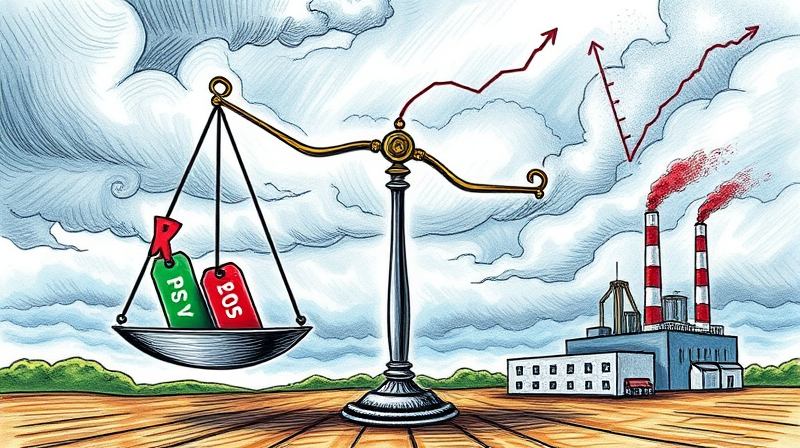
In 2025, the landscape of Exchange Traded Funds (ETFs) has transformed dramatically as retail investors adopt more selective and risk-aware strategies. Amid concerns over market valuations, inflation, and global uncertainties, these investors are demonstrating unprecedented caution when choosing their ETF exposures.
Over the past decade, ETFs have evolved from simple index trackers to complex products encompassing active management, smart beta, and thematic strategies. This evolution has empowered retail investors with unprecedented choice, but it has also introduced a maze of products that require careful scrutiny.
The ETF market continues to expand at a remarkable pace across North America, Europe, and Asia-Pacific. In the United States, ETFs now represent about 40 percent of the retail investment market, a significant jump from just over 10 percent in Europe, which is rapidly catching up.
This growth is fueled by several factors:
Such drivers have transformed ETFs from niche instruments into mainstream portfolio staples, prompting asset managers to innovate continuously.
As macroeconomic pressures mount, retail investors are recalibrating their risk tolerance. Inflation concerns and the specter of overvalued equities have spurred many to seek investment vehicles that blend market participation with downside safeguards.
One of the fastest-growing categories is buffered or defined outcome ETFs. These products offer downside protection with capped upside, allowing investors to mitigate severe losses in volatile markets while still capturing moderate gains.
Simultaneously, there is a notable uptick in income-oriented strategies. Derivative income ETFs, which combine equity exposure with monthly options premiums, and traditional dividend-focused ETFs both cater to investors eager for regular cash flows.
Cost and liquidity remain paramount. Retail investors are more price-conscious than ever, favoring funds with the lowest expense ratios to preserve returns over time.
Advised practices include scrutinizing bid-ask spreads, assessing the liquidity of underlying assets, and employing limit orders to minimize trading costs and avoid price dislocations. This meticulous approach is emblematic of more conservative ETF choices in a complex market.
Moreover, the debate between active and passive management has intensified. While passive ETFs continue to dominate in cost-sensitive portfolios, the rise of active and alternative ETFs reflects a desire for detailed risk-managed approaches and strategies that can navigate market dislocations.
Retail investors also pay closer attention to structural risks such as broken ETF risk, which emerges when an ETF’s market price deviates significantly from its net asset value during periods of stress.
Regional variations illustrate how local market structures and investor education shape ETF adoption:
In Europe, online savings plans and fractional investing have unlocked ETF access for young adults. Roughly three in four young European investors now hold at least one ETF.
Across the Atlantic, 63 percent of US retail investors intend to purchase ETFs in the coming year, up from just 37 percent two years ago. Down under, Australian interest has surged to 72 percent of surveyed investors, doubling from previous levels.
Advancements in investment platforms are central to this evolution. Online savings plans OSPs, robo advisors, and neobanks are enabling automated purchases from as low as a few dollars per month. This fractional investing model encourages disciplined dollar cost averaging and broad diversification.
FinTech innovations also provide tailored ETF selection tools, empowering retail clients with analytics that were once exclusive to institutional managers. Interactive dashboards highlight metrics such as tracking error, underlying asset liquidity, and liquidity-adjusted bid ask spreads.
On the regulatory front, potential crypto friendly policies in the US could accelerate mainstream acceptance of cryptocurrency ETFs. Meanwhile, inflation remains the top concern for 21 percent of investors, influencing allocations toward defensive sectors and inflation protected bond ETFs.
Heightened geopolitical risks drive flows into defense, utilities, and energy sector ETFs, illustrating how global events shape retail strategies in near real time.
For retail investors aiming to navigate this cautious landscape, a structured approach is essential:
By adhering to these practices, investors can build resilient portfolios that balance growth potential with effective risk mitigation.
As the ETF market matures, retail participants are no longer passive bystanders. They are becoming methodical selectors, armed with tools and insights to manage costs, control risks, and seize opportunities.
This journey toward cautious ETF selection reflects a deeper shift in investor psychology—one that values protection and precision as much as performance. By staying informed, leveraging technology, and focusing on cost-sensitive retail investors persist, individuals can navigate uncertainty and pursue their financial goals with confidence in 2025 and beyond.
Ultimately, the path to successful investing lies in balancing ambition with prudence. By staying engaged with market developments, continuously educating themselves, and harnessing the tools provided by digital platforms, retail investors can transform cautious strategies into long term success stories.
References













